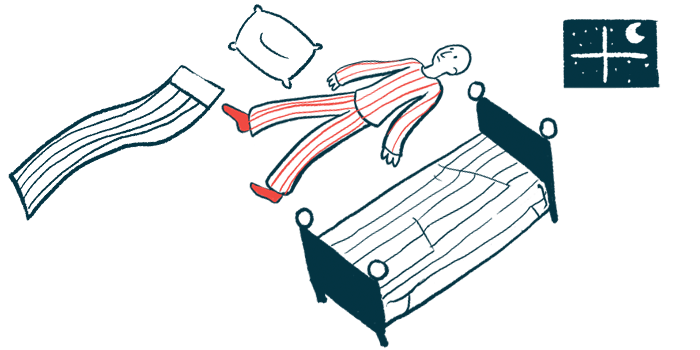Daytime Sleepiness in Parkinson’s Not Tied to Normal Sleep Patterns
No differences seen among morning birds, night owls, or those in-between

Differing natural sleeping schedules, known as a person’s chronotype, do not associate with daytime sleepiness in people with Parkinson’s disease, a study reported.
Rather, daytime sleepiness related most to the type of dopamine therapy that patients used. But no significant differences were evident between morning or evening chronotypes, or those who fit into a “neither” category, and Parkinson’s medication.
The study, “Chronotype, sleep, and sleepiness in Parkinson’s disease,” was published in Parkinsonism and Related Disorders.
The circadian rhythm is a 24-hour “biological clock” that regulates body functions, including sleep-wake cycles. This clock, found in the brain’s hypothalamus, is composed of a cluster of proteins known as the suprachiasmatic nucleus (SCN).
A person’s chronotype captures their natural tendency to sleep at a particular time — being what is called an early bird or a night owl — and it is closely related to the circadian rhythm. Those with a morning chronotype prefer to wake early and feel most active during the earlier parts of the day, while people with an evening chronotype prefer to wake much later in the day and feel most active in the early evening or at night.
However, “most individuals are neither evening nor morning types but lie somewhere in between,” the research team with Massachusetts General Hospital noted.
Troubled sleep reported to affect up to 90% of Parkinson’s patients
Disturbed sleep is common with Parkinson’s, affecting up to 90% of patients, and emerging evidence suggests that disruptions to the circadian rhythm are involved. But to date, no studies have evaluated chronotypes, patient characteristics, and measures of sleep or sleepiness in people with Parkinson’s, the team added.
Researchers enrolled 186 patients (55.4% male, 44.6% female; mostly Caucasian) attending the Parkinson’s Disease and Movement Disorders Center at Northwestern University in Chicago. All had no signs of cognitive impairment or depressive symptoms; their mean age was 65.5 and their mean disease duration 6.17 years.
Chronotype was assessed using the Horne-Ostberg Morningness-Eveningness Questionnaire (MEQ), a self-reported assessment of a person’s circadian rhythm to determine peak alertness. Based on responses, patients were assigned to one of three categories: morning type, evening type, or neither type. Daytime sleepiness was evaluated with the Epworth Sleepiness Scale (ESS) questionnaire, with scores greater than 10 indicating excessive sleepiness. Other sleep metrics were recorded, including sleep and wake times and sleep latency, a measure of how long it takes a person to fall asleep.
Most of the people in each group were retired or unemployed, the researchers wrote, a status worth noting as “chronotype can change over the course of the lifespan, and especially during retirement.”
Morning was the most common chronotype (63.4%), followed by neither types (33.9%) and evening types (2.7%).
Those with an evening chronotype were younger (mean age, 57.6) than people with a neither or morning chronotype (mean ages of 67.3 and 64.91, respectively). People in the neither type category had a longer disease duration, but the difference was not significant.
Although self-reported sleep duration was similar across all chronotypes, 38% of the patients had excessive daytime sleepiness (an ESS score greater than 10). Morning types fell asleep faster than did neither types, and while morning types also slept and woke up significantly earlier, people in both the chronotype categories had similar rates of daytime sleepiness.
Use of dopamine agonist therapy and dual therapy (a combination of levodopa and a dopamine agonist) significantly associated with excessive daytime sleepiness.
However, no difference in daytime sleepiness within a chronotype group was seen between medicated or unmedicated patients.
Morning types were more likely to be on a monoamine oxidase-B (MAOB) inhibitor than those with a neither type, and neither types were more likely to take a sleep aid and/or an antidepressant than morning types.
“Morning type is the most common chronotype in PD [Parkinson’s disease]. There are no overall differences in daytime sleepiness across chronotypes in PD,” the researchers concluded.
“Considering the emerging evidence of circadian dysregulation in PD, chronotype assessment should be incorporated into clinical investigations of PD as it may have important implications for clinical care and treatment,” they added.
Study limitations included a lack of objective, rather than self-reported measures of patients’ sleep and sleepiness, and objective quantification of disease severity and medication use.
Future work “will discern if disease severity and progression may affect the chronotype in PD, and whether a certain chronotype differentially affects the quality of life, symptom control, and medications effectiveness,” the team wrote.







